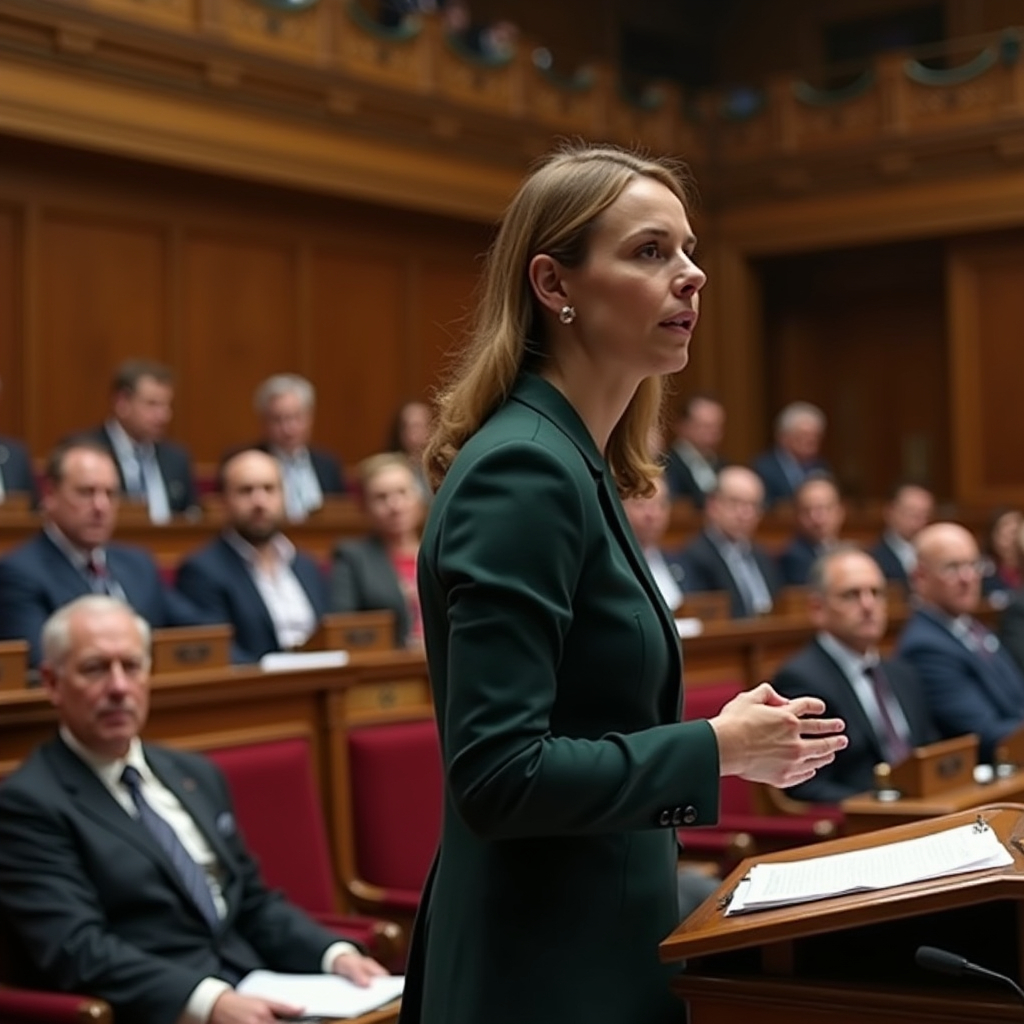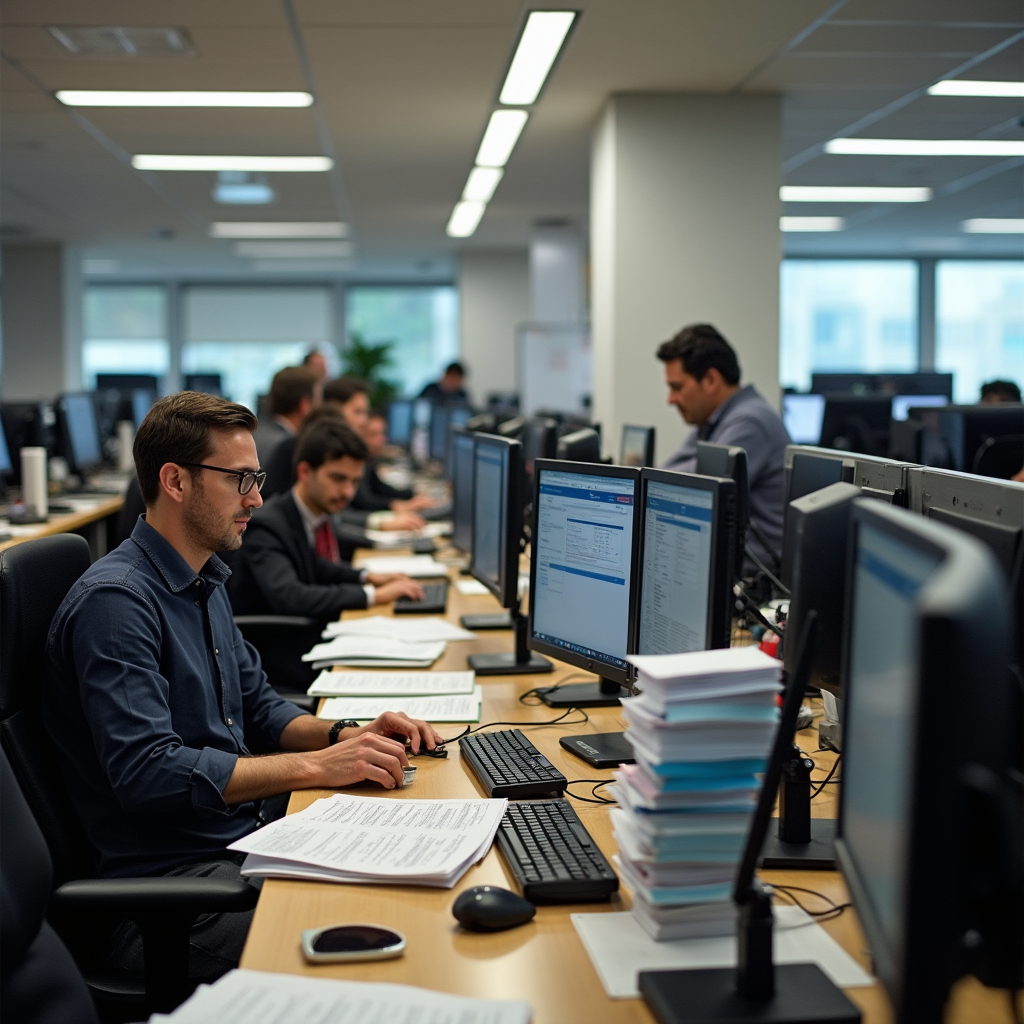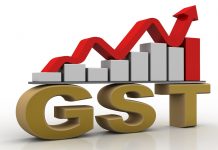This article has been written by Prity. This article provides a detailed analysis of all the aspects of Section 194J (TDS for professional or technical services) of the Income Tax Act, 1961.
Table of Contents
Introduction
The budget of 2024 presented by Finance Minister Mrs. Nirmala Sitharaman, in Parliament, became a talk of the town among the general public, particularly the middle-class people or salaried people. It has brought significant changes in the Indian tax system.
In 1962, the Indian Parliament, with the consultation of the Ministry of Law, enacted a law known as an Income Tax Act, 1961 (hereinafter referred to as ‘the Act of 1961’). It came into effect on 1st April 1962 with certain aims and objectives. This Act deals with different modes or methods of collecting the taxes on income and tax deducted at source (shortly referred to as TDS), which is one of those modes or methods.
Chapters XVIIA, XVIIB and XVIIBB of the Act of 1961 in Sections 190 to 206CC deal with the deduction and collection of taxes at source from where incomes generated or payments made as prescribed in the provisions of the Act of 1961 and Income Tax Rules, 1962 (shortly referred Rules of 1962).
In the beginning, when the Act of 1961 was enforced, there were only four incomes or payments where tax was deducted at source namely: Salary, Interest on Securities, Interests other than Interest on Securities, and Dividends. With time and need, other payments or incomes have been added to the Act of 1961. One of the TDS provisions as Section 194J was added in the year 1995 in the Act of 1961 through Act 22 of 1995. This section deals with the deduction of taxes at the source with respect to professionals and technical services.
This article provides a complete overview of Section 194J of the Act of 1961 along with the recent amendments or changes in this Section. By the end of the article, readers will have a comprehensive understanding of Section 194J of the Act of 1961.
What is Section 194J of Income Tax Act, 1961
As mentioned earlier, there are diverse modes for deduction of taxes at the source in the Act of 1961, and Section 194J of the Act of 1961 is one of them. Section 194J deals with the deduction of taxes at source of payments by the payers in lieu of availing professional and technical services from payee. The person or organisation that avails the professional and technical services after deducting the taxes in a certain percentage transfers the rest of the payment as a fee to the person who rendered such services. The person who deducts the taxes is known as a deductor or payer and whose payment is deducted known as a deductee or payee. Under this Section, it is the responsibility of the deductor to deduct the taxes when they accrue and submit the taxes deducted to the Government on behalf of the deductee. The deductee claims the TDS filed on his behalf while filing his income tax return.
There are 3 clauses in this Section that are further divided into several sub-clauses, proviso, and explanations, which were added through different Amendments in the Act of 1961 with time. This Section itself was added in the Act of 1961 in the year 1995 and came into effect from 1st July 1995. The main purpose behind the addition of this Section was to curb tax evasion by imposing the responsibility to deduct the tax at a source where income is generated rather than at a later date. This provision eases the burden and minimises the cost of collecting the taxes of tax administration besides maximising the revenue collection of the Government.
Clause-wise explanation of the provision

- Clause (1) of Section 194J provides that who can deduct the TDS, from whom TDS can be deducted, from whom TDS can not be deducted and who can not deduct the TDS under this clause.
- Sub-clause (a), or (b) deals with the professionals or technical services rendered on that fee and is deducted as TDS before transferring to the person or organisation that renders such services.
- Sub-clause (ba) says that payment made to the director of the company as a remuneration, or fees, or commission whatever name called, except the TDS deducted under Section 192 of the Act of 1961.
- Sub-clause (c) says that before giving royalty for the use of assets and property of the owner, the person who is giving royalty deducts the TDS and then transacts rest of the payment as a fee to the owner of the assets and property in the cases of copyright, patent, trademark and lease.
- Sub-clause (d) says that any sum mentioned in clause (va) of Section 28.
- Clause (1) of Section 194J also provides the manner in which the payment is as a fee to be paid to the tax deductee. It also provides how much to be deducted as a tax, meaning what the threshold limit of the deduction is, that we will discuss in detail further under heading, ‘The Threshold Limit of deduction under Section 194J’.
- The first proviso of Section 194J(1) under subclauses (A) and (B) deals about the circumstances in that no deduction shall be made under this Section.
- The second proviso of this Section states when this Section can apply to the individual or Hindu undivided family, and he or they can deduct sum as a tax before crediting sum from his or their ends.
- The third proviso of this Section states that the individual or Hindu undivided family mentioned in second proviso can not deduct the sum as a tax when he or they paid or credit such sums for availing of the professional services for their personal purposes.
- The fourth proviso of this Section was inserted by the Amendment Act of 7 of 2017 and came into effect from 1st June 2017. It brought down the rate of TDS deduction from 10 % to 2 % in the case of any payment to the payee engaged only in the business of operation of the call centre.
- The word ‘or’ in Sub-clause (b) and Sub-clause (c) and Sub-clause (d) in total were inserted in Section 194J (1) through Amendment Act 29 of 2006 that was effective from 13th July 2006. Sub-clause (ba) was inserted by Amendment Act 23 of 2012 and came into force on 1st July 2012.
- Sub-sections (2) and (3) were omitted by Act 32 of 2003 from the Section. This Section also provides four explanations that deal with what are the meaning of the professional services, technical services, royalty, and sum mentioned under clause (d) of subsection (1) in clauses (a), (b), (ba), and ( c) respectively.
The headings mentioned below covered in detail all aspects of the provisions of Section 194J of the Act of 1961.
Who can deduct tax under Section 194J
Sub clause (1) of Section 194J states that any entity or person, except an individual or Hindu undivided family, who has the responsibility to pay,
(a) a fee for availing professional or
(b) a fee for availing technical services or
(ba) fee, commission, or remuneration to the director of the company other than the payment made under Section 192 of the Act of 1961 or
(c) royalty payment for use of the intellectual assets and property or
(d) sum referred to in Section 28(va),
to the resident rendering such services or providing royalty or work as a director or agreeing to the non-compete agreement under Section 28(va) must deduct tax under Section 194J.
Person
According to Section 2(31) of the Act of 1961 person means:
- an individual,
- a Hindu undivided family,
- a company,
- a firm,
- an association of persons, or a body of individuals, whether incorporated or not,
- a local authority, and
- every artificial juridical person, not falling within any of the preceding sub-clauses. For example, a university, cooperation, registered society, trust, central government, and state government, etc.
However, this definition of the person is not exhaustive.
An individual or a Hindu undivided family comes within the definition of person only if their accounts are audited under Section 44AB (a) and (b) or fulfil the requirements of the proviso of Section 194J (1).

Further, Explanation under Section 2(31) states that association of persons, body of individuals, local authority, or artificial juridical person shall be deemed to be a person whether or not, such persons are formed, established or incorporated with an aim of deriving profits, gains, or income.
Meaning of person responsible for paying
Section 204 of the Act of 1961 provides the meaning of the sentence ‘person responsible for paying’ for the purposes of the provisions in Chapter VII B and Section 285. According to Section 204(iii) the person responsible for deducting the TDS under Section 194J is the payer himself, or, if the payer is a company, the company itself, including the principal officer of the company. So, it is the responsibility of the payer or deductor to deduct the TDS before crediting or paying the payments or fees to the payee and depositing the same to the government.
Rate of deduction of TDS
In the above-mentioned circumstances, presently the person deducts the TDS at the rate of either 10% or 2% of the payment or fee credited or transferred under Section 194J(1). The rate of deduction of TDS was 5 % when this Section was inserted into the Act of 1961 i.e. in 1995. A substitution to 10 % instead of 5 % took place by the Amendment Act 22 of 2007. In the year 2020, an Amendment as a Financial Amendment Act, 2020 occurred, and the deduction of TDS at the rate of 2% in certain circumstances was inserted in the Act of 1961. The rate of deduction of TDS for professional services is the same as 10% of the payment credited or transferred to the resident rendering the services. The Financial Amendment Act, 2020, reduces the rate of deduction of TDS to 2% in the case of technical services.
In the case of royalty payment, the rate of deduction will be 2% when the royalty payment is in the nature of consideration for sale, distribution, or exhibition of cinematographic films. In the rest of the royalty payment, the deduction payment rate is 10%. The rate of deduction in the rest of the cases is 10%. For example, commission or remuneration is paid to the director. From 1st July 2021 TDS is to be deducted at a higher rate if the PAN of the deductee is not furnished. Rate of deduction may increase to 20% if PAN of the payee or deductee is not available or not provided to the payer or deductor. Sections 139AA, 206AA, and 206AB of the Act of 1961 and Rule 114 AAA of the Rules of 1962 deals with the higher rate of deduction in case of non-furnished or inoperative PAN.
This section also talks about the rate of deduction of TDS at a rate of 2% in the business of operation of call centres.
Section 197 provides that if the deductee or payee produces the certificate for deduction of taxes at a lower rate than the specified rate, the deductor of the TDS deducts the tax at a lower rate.
The rates of deduction of tax as TDS under Section 194J in tabular form are as follows:
| Nature of payments or fees | Rate of deduction of TDS |
| Fees for professional services | 10 % |
| Fees for technical services | 2 % |
| When the royalty payment is in the nature of consideration for sale, distribution, or exhibition of cinematographic films | 2 % |
| Rest of the royalty payment | 10% |
| Commission or remuneration paid to the Director | 10% |
| Non-compete fees | 10% |
| Any payment to the payee engaged only in the business of operation of the call centre | 2% |
| Other payments or fees | 10% |
| Inoperative PAN | 20% |
Let us understand the above table of deduction with the following illustrations:
Illustration I: ABC company avails the professional services from Mr. G of worth Rs. 45,000 in a single financial year. The TDS in this case will be deducted at 10% as mentioned in the above table.
So, TDS required to be deducted is 10% on 45,000 = 4,500
The amount actually credited or net payment paid to the account of Mr. G after deducting the TDS is Gross amount – TDS deducted i.e. 45,000-4500= 40500
Illustration II: ABC company avails the technical services from Mr. G of worth Rs. 45,000 in a single financial year. From the above mentioned table it is manifested that the rate of deduction of TDS in such cases is 2%. So, TDS required to be deducted is 2% on Rs.45,000 = Rs. 900
The amount actually credited or net payment paid to the account of Mr. G after deducting the TDS is Gross amount – TDS deducted i.e. Rs. 45,000- Rs. 900= Rs. 44,100.
Who is liable to pay TDS under Section 194J

As per Section 194J(1) of Act of 1961, a resident who is :
- rendering professional or technical services mentioned under sub-clauses or
- taking royalty payment for use of his/her copyrighted work, patent and trademark, or
- work as a director and get payment as a remuneration, fees, or commission for his/her work other than the payment on which tax is deductible under Section 192 of the Act of 1961 or
- getting non-compete fees under the agreement.
All of the above-mentioned persons are liable to pay TDS.
An individual or Hindu undivided family and TDS
Earlier, under Section 194J(1), an individual or Hindu undivided family was not responsible for deducting TDS. But the proviso of Section 194J(1) inserted by Act 20 of 2002 makes it clear that individuals or Hindu undivided families are also liable to deduct the taxes at source in following circumstances:
TDS deducted if services were rendered for profession or business
In the case of business, if in the previous financial year, the total sales, gross receipts, or turnover of the business of an individual or Hindu undivided family exceeds Rs. 1 crore, the individual or Hindu undivided family shall deduct the TDS upon such sums credited or paid to the deductee for professional or technical services availed from him/her in current financial year. For example, Mr. H runs a business, and he avails professional services of Mr. D for his business purposes in the financial year 2023-2024. The turnover or the total sales or the gross receipts of the business run by Mr. H exceeds one crore in preceding financial year i. e. in the year 2022-2023. Mr. H is responsible for deducting TDS on payments credited or paid to Mr. D for rendering professional services in the current financial year.
Similarly, in the case of a profession carried on by an individual or Hindu undivided family whose total sales, gross receipts, or turnover exceeds Rs. fifty lacs (Rs. 50 lakhs) the TDS for availing professional or technical services must be deducted by the individual or Hindu undivided family.
The monetary limitation of Rs. 1 crore and of Rs. 50 lakhs for deducting the TDS in the case of individual or Hindu undivided family under this Section was inserted by the Amendment Act of 2020, i.e., Finance Act, 2020. Before this Amendment, the monetary limit was associated with Section 44AB of the Act of 1961.
No TDS if services are rendered for personal purposes
By the Amendment Act 32 of 2003 a third proviso was inserted to this Section that provides that if an individual or members of the Hindu undivided family mentioned in second proviso above avails professional or technical services exclusively for his/her or their personal purposes shall not be liable to deduct TDS from such sums credited or paid by way of fees for such services. For example, Ms. P runs a business, and she builds up her personal home. For interior designing of her home, she avails the service of a professional interior designer Ms. A worth rupees one lakhs fifty thousand. Here, Ms. P has no responsibility to deduct TDS on sums paid or credited to Miss A for her service rendered because services availed by Ms. P are for personal purposes.
Under this proviso, the use of the word ‘exclusively’ means that professional services must be availed 100 % for personal purposes only. If such services are availed of for business purposes or personal purposes, both then responsibility arises for deduction of TDS.
What are the services or payments covered under Section 194J
Following are services and payments covered under Section 194J for deduction of TDS:
- Professional services
- Technical services
- Royalty payment
- Commission, fee, and remuneration paid to the director, excluding salary
- Non-compete fees
Explanation of certain terms under Section 194J
Following are the certain terms used under this Section or other Sections of the Act of 1961:
Professional services
Explanation (a) of Section 194J provides a list of the services that mean professional services. Professional service means a service provided by a person who is an expert in that profession, and has rendered the service in the course of carrying on that profession. Following services come under professional services:
- Legal
- Medical
- Engineering
- Architectural
- Accountancy
- Technical consultancy
- Interior decoration
- Advertising
- Such other services as notified by the Board
This list is not exhaustive. The Board [here the Board means Central Board of Direct Taxes (CBDT)] may from time to time for the purpose of this Section or Section 44AA notify other services as a professional service.
Under Section 44AA, CBDT has notified the following services as professional services:
- Film Artist
- Company Secretary
- Authorised representatives
- Information technology

By authority given under Section 194J, CBDT has notified the below mentioned services as professional services vide Notification No. S.O.2085(E)[ 88/2008/F. No. 275/43/2008-IT(B)], Dated 21/08/2008:
- Sports Persons,
- Event manager,
- Anchor,
- Umpires and Referees,
- Physiotherapist,
- Coaches and Trainers,
- Team physiatrist,
- Team physician, and
- Sports Columnists.
Fees for technical services
Explanation (b) of the Section 194J referred to Explanation 2 to clause (vii) of Sub-section (1) of Section 9 and states that fees for technical services shall have the same meaning as given in the above mentioned provision.
Explanation 2 to clause (vii) of Sub-section (1) of Section 9 says that fees for technical services mean any payment for any managerial, technical, or consultancy services rendered. The payment includes any lump sum payment and services, including the provision of services of technical or other personnel. For example, web designing, software development, data analysis, research and development, and testing certification.
However, there are some services mentioned in this Section in which any consideration made for rendering of those services do not come under fees for technical services such as consideration for:
- Construction,
- Assembly,
- mining, or
- similar projects undertaken by the recipient
Considerations or incomes received under the head salaries of the recipient are not to be treated as a fee for technical services.
Remuneration or commission to director
Sub-clause (ba) of clause (1) of Section 194J was added under the Act of 1961 through the Amendment in the year 2012. This provision does not apply in the case where there is a contractual relationship of employer or employee between the director or the company. This provision will also not be applicable where the director is getting payment for rendering service to the company as a salary, in this case, Section 192 of the Act of 1961 applies. There is no threshold limit for deduction at source (TDS) in this case but rate of deduction is 10 %, which means whatever remuneration or commission the director of the company gets for rendering services to the company, TDS will be deducted at the rate of 10 %.
Any remuneration, commission, or fees paid to the director of any company by name whatsoever and the relationship between the director and company is of employer-employee will not attract the application of this Section. Sitting fees or fees for attending meetings paid to the director come under the preview of Section 194J. For example, Miss B is a director of a company and gets Rs. 50,000 per month as a fixed salary. She also gets Rs. 25,000 per year as sitting fees for the company’s board of directors meeting. Deduction of TDS under Section 194J, in this case, will be applied on the fees she gets as sitting fees of worth Rs. 25,000. The deduction will be at the rate of 10 %, i.e. Rs. 2,500.
Royalty
Explanation (ba) of Section 194J(1) states that the royalty has the same meaning as in Explanation 2 to clause (vi) of sub-section (1) of Section 9 of the Act of 1961. This was inserted by Amendment Act 29 of 2006.
Explanation 2 to clause (vi) of sub-section (1) of Section 9 provides that royalty means payment paid or made for the following:
(i) conveyance of all or any rights in relation to:
- patent,
- invention,
- model design,
- secret formula or process,or
- trademark, or
- similar property,
- it also includes granting of a licence;
(ii) imparting of any information concerning:
- the working of, or
- the use of,
the supra-cited intellectual properties or similar property;
(iii) usage of the above-mentioned intellectual properties or similar property;
(iv) imparting or sharing of any information related to technical, industrial, commercial, or scientific knowledge, expertise, or skill;
(iv-a) use or right to use any industrial, commercial, or scientific equipment except the amount referred under Section 44BB. This clause was inserted through Act 14 of 2001.
(v) conveyance of all or any rights in relation to:
- any copyright,
- literacy,
- artistic,
- films or video tapes for use of television, or
- tapes for use of radio broadcasting,
- It also includes granting of a licence,
- but it does not include payment for the following:
- sale,
- distribution, or
- exhibition,
of a cinematographic film;
(vi) providing any services in connection with or in relation to the supra-mentioned activities under sub-clauses (i) to (iv), (iv-a), and (v).
Consideration or payment paid or made to the recipient under this provision also includes any lump sum payment but does not include the payment to the recipient as income that is chargeable under the head capital gains.

There were contradictory views of the judiciary on imposition of taxes or TDS on payment of royalty, particularly on computer software or some other. Therefore, to mitigate these contradictions and to enlarge the scope of royalty, Parliament came up with the Amendment Act 23 of 2012, known as the Finance Act, 2012, and amended the definition of royalty. This Act amended the clause(vi) of Sub-Section(1) of Section 9 and added Explanations 4, 5, and 6 after Explanation 3. These are clarificatory Explanations and have retrospective effects dated 1st June 1976.
Explanation 4 of Section 9(1)(vi) makes it clear that by whatever means or via, the transfer of all or any right in respect of any right, property or information as mentioned in Explanation 2, includes and has always included transfer of all or any rights for use or right to use a Computer software would amount to the royalty. It also includes granting of licence to use.
Explanation 5 of Section 9(1)(vi) makes it clear that:
- the term royalty includes and has always included payment with regard to:
- any right,
- property, or
- information,
irrespective of:
- the possession or control of the same is with the payer;
- same is used directly with the payer;
- the location of the same is in India.
Explanation 6 of the Section 9(1)(vi) makes it clear that the term process includes, and shall be deemed to have always included transmission by satellite (including up-linking, amplification, conversion for down-linking of any signal), cable, optic fibre or by any other similar technology, irrespective of such process is secret or not.
Taxation on software purchase under Section 194J
Central Board of Direct Taxes issued Notification No. 21/2012 [F.No.142/10/2012-SO(TPL)]S.O. 1323(E), dated 13th June, 2012 to avoid the multi-level TDS under Section 194J.
It states that where TDS is deducted on the first transfer of Software either under Section 194J or Section 195, TDS is not required to be deducted in subsequent transfers where the transferor is a resident. By this notification on the following specified payments, TDS would not be deducted under Section 194J, namely:
- Payment by a person (transferee) for acquisition of software from another person, being a resident (transferor), where
(i) software is acquired in a subsequent transfer, and the transferor has transferred the software without any modification,
(ii) tax has been deducted
(a) Under Section 194J on payment for any previous transfer of such software, or
(b) under section 195 on payment for any previous transfer of such software from a non-resident, and
(iii) the transferee obtains a declaration from the transferor that the tax has been deducted either under sub-clause (a) or (b) of clause (ii) along with the permanent account number of the transferor.
Examples
Example 1
Suppose Xyz is a foreign company manufacturing software in England. It transferred that software to the Indian company Vimigo Private Limited. Upon this, no TDS is deducted under Section 195 of the Act of 196. The same software was subsequently transferred to another Indian company Sunrise Private Limited. The question is whether responsibility to deduct TDS would arise under Section 194J.
In this case, if tax is not deducted on a previous occasion under Section 195, the benefit of exemption notification would not arise. In fact, tax liability would arise under Section 194J on subsequent transfer of software.
Example 2
Suppose a foreign company in France manufacturing software. It transferred the software to the Indian company(1) on which tax is deducted by the Indian company. If the Indian company(1) again transfers the software to another Indian company (2) without any modifications. The question is whether TDS responsibility would arise when an Indian company subsequently transferred the software without any modification to another Indian company.
In the above case, no responsibility arises against the Indian company (2) on subsequent transfer of software provided, the Indian company(2) must obtain a declaration from an Indian company(1) that TDS has been deducted on software payments by Indian company (1) under Section 195, along with the copy of PAN of the Indian company(1).
Example 3
ABC, an Indian company, manufactures software. It transferred software to another Indian company known as PRT. The PRT paid to the ABC company payment for the software after deducting the TDS under Section 194J. The PRT company, again without any modification in the software, transferred it to another Indian company known as XYZ. The question here is whether responsibility to deduct TDS would arise again when PRT company retransferred the software to XYZ company.
In this case, no responsibility arises to deduct the TDS under Section 194J on subsequent transfer or retransfer of software due to exemption provided in the notification issued by CBDT as notification no. 21/2012. To avail of the benefit of this exemption, the Indian company XYZ must obtain a declaration from Indian company PRT that tax has been deducted on software payments by PRT on any previous occasion under Section 194J. The copy of the PAN of the PRT company also needs to be obtained.

Non-compete fees
Sub-clause (iv) of clause (B) of Sub-section (1) of Section 194J says any sum referred under clause (va) of Section 28 paid by payer to the payee for the agreement made between them is eligible for the deduction of TDS under Section 194J.
Clause (va) of Section 28 of the Act of 1961 was added by Act 20 of 2002. It says that any sum either in cash or kind has been received or able to be received in lieu of an agreement for:
(a) barring from carrying out any activities with respect to any business.
(b) barring from sharing any :
- know how,
- patent,
- copyright,
- trademark,
- licence,
- franchise, or
- any other business or commercial right of a similar nature, or
- information or technique that is likely to help in the manufacturing or processing of goods or provision for services;
exceptions are added to the sub-clause (a), which says that the provision of clause (a) shall not apply in the following cases:
(i) if any sum either in cash or kind has been received or able to be received or a non compete fees received or able to be received for the transfer of the right to manufacture, produce or process any article or a thing or right to carry on any business, and that chargeable under the head capital gains, clause (a) shall not apply ;
(ii) if any sum is received as compensation from a multilateral fund under the United Nations Environment Program as a non-compete fees in accordance with the terms and conditions of agreement entered by the Government of India. For example, in the case of Montreal Protocol.
Explanation (c) of Section 194J
It says that a sum referred under Section 194J (1) credited to any account, whether the suspense account or by any other name in the book of account of the payer. It will be deemed as credit to the payee.
Threshold limit of deduction under Section 194J
The threshold limit is the amount of payments upon which no TDS is deducted. When the amount of payments exceeds the threshold limit prescribed in the Section, then only provisions of TDS will be applicable.
Following are the certain threshold limit of TDS under Section 194J:
Clause (A) of the first proviso of Section 194J(1) states that TDS will not be deducted from the above-mentioned payments credited or paid as a fee if such payments have been made before 1st July 1995.
Further clause (B) of the first proviso provides a certain threshold limit of non-deduction of TDS on the above-mentioned fees credited or paid by the deductor to the deductee as follows :
(i) thirty thousand rupees (Rs. 30,000) for professional services mentioned under sub-clause (a) of Section 194J(1) or
(ii) thirty thousand rupees (Rs. 30,000) for the technical services mentioned under sub-clause (b) of Section 194J(1) or
(iii) Nil for the remuneration, fee, or commission paid to the director other than the amount paid and deductible under Section 192 of the Act of 1961 under sub-clause (ba), or,
(iv) thirty thousand rupees (Rs. 30,000) for the royalty payment mentioned under sub-clause (c) of Section 194J(1), or,
(v) thirty thousand rupees (Rs. 30,000) for the sum referred under Section 28(va) or non-compete fees.
The threshold limit of deduction of tax as TDS under Section 194J in tabular form is as follows:
| Nature of payments or fees | Threshold Limit |
| Fees for professional services | Rs. 30,000 |
| Fees for technical services | Rs. 30,000 |
| When the royalty payment is in the nature of consideration for sale, distribution, or exhibition of cinematographic films | Rs. 30,000 |
| Rest of the royalty payment | Rs. 30,000 |
| Commission or remuneration paid to the Director | Nil |
| Non-compete fees | Rs. 30,000 |
| Any payment to the payee engaged only in the business of operation of the call centre | Rs. 30,000 |
| Other payments or fees | Rs. 30,000 |
| Inoperative PAN | Rs. 30,000 |
Threshold limit of thirty thousand rupees (Rs.30,000) in the above-mentioned fees was substituted by Amendment Act 14 of 2010 instead of twenty thousand rupees (Rs.20,000). It was effective from 1st July, 2010. The threshold limit for royalty payment and non-compete fees were inserted in the Act of 1961 by Amendment Act 29 of 2006. In all the above-mentioned services, if the transaction of payments exceeds the threshold limit, i.e., Rs. 30,000 in the financial year for each of the services, then only there will be a deduction of TDS. The threshold limit of Rs. 30,000 applies to each service or payment independently. There is no threshold limit for remuneration, fee, or commission paid to the director excluding salary. It means in the case of remuneration paid to the director other than the salary TDS will be deducted even if the payment of the transaction is below Rs.30,000 at the rate of 10 %.

Examples
For example, ABC company credited or paid a fee of Rs. 20,000 for availing professional services and Rs. 25,000 for availing technical services by Mr. G in a financial year. The total amount to be credited or to be paid to Mr. G in a financial year is Rs. 45,000. TDS will not be deducted in this case because payment of fees in each service does not exceed the threshold limit of Rs.30,000.
Similarly, in the above case, if ABC company avails the professional services of Mr. G in a single financial year worth Rs. 20,000 and again worth Rs. 25,000, aggregate of Rs. 45,000 liable to deduct the TDS.
ABC company avails the professional services of Mr. G in a single financial year of Rs. 35,000 and the technical services of worth Rs. 25,000. In this case the TDS will be deducted for the professional services only not for the technical services.
ABC company paid to the Director of the company a remuneration of worth Rs. 25,000 in a single financial year. TDS will be deducted at the rate of 10 % in this case because there is no threshold limit for remuneration paid to the director other than salary under Section 192 of the Act of 1961.
Modes of payment and time of deduction under Section 194J
Sub-clause (1) of Section 194J talks about different modes of payment of fees or sums. It says that the person or entity who is responsible for paying the fees or sums as payment can make the payment as follows:
- by credit of the fees or sums in the account of the payee, or
- by payment of fees or sums in cash, or
- by issue of cheque, or
- by issue of draft, or,
- by any other method.
The deductor of the TDS deducts the taxes at the source either at the time of credit of the payment as a fee or at the time of making out the actual payment to the payee through any of the above mentioned different modes, whichever is earlier.
TDS should be deducted from the very beginning of the payment made for availing the services mentioned in Section 194J even though the first installment of payment does not reach the threshold limit if there are chances that the payments paid in installment or total payment made exceed the threshold limit within a single financial year.
For example, if an ABC company hires freelance writers for blog writing. The company entered into a contract with them. The services rendered by the freelance writers amount to professional service. Rate of deduction of TDS for this service is 10% and the threshold limit is Rs.30,000 in a financial year. The freelance writer completed the project worth Rs. 10,500 and there is likely that the total payments for blog writing will exceed the threshold limit of Rs.30,000 during the single financial year. In this case TDS at the rate of 10% will be deducted upon the payment of Rs. 10,500 which is due to pay for the completed project.
So, TDS required to be deducted is 10% on Rs. 10,500 = Rs. 1050. The amount actually credited or net payment paid to the account of the freelance writer after deducting the TDS is Gross amount – TDS deducted i.e. Rs. 10,500 – Rs. 1050 = Rs. 9,450.
Important case laws on Section 194J
Following are the few cases in relation to Section 194J:
Engineering Analysis Centre Of Excellence Private Limited vs. The Commissioner of Income Tax and Anothers (2021)
In this case, the Supreme Court went through the analysis of Explanations 4, 5, and 6 added through Amendment Act 23 of 2012 in Section 9(1)(vi). The Court, with respect to Explanation 4, held that it could not apply to any right for the use of or the right to use Computer software even before the term Computer Software was inserted in the Act.
Further, with respect to Explanation 6, the Supreme Court, in the case in hand, held that it is illogical to insert this explanation in Section 9(1)(vi) with retrospective effect Since, technology related to satellite, optic fibre, or other similar technology was started to be regulated for the first time by the Parliament through the Cable Television Networks (Regulation) Act, 1995, that was much after 1976.
ITO, Ward 6 (4), New Delhi vs. M/s. Mikroz Infosecurity Pvt. Ltd. New Delhi ( 2018)

In this case, the assessee was into the business of sales of software and services. The assessing officer from the financial statements of the assessee, found that it had purchased software from various parties worth Rs.1,73,72,817/- but has not deducted tax under Section 194J. The assessee contended that out of worth Rs.1,73,72,817/- an amount of Rs.1,52,60,159/- was spent in purchasing hardware and the software purchased embedded with hardware. The assessee further contended that it had not retained any copyright but sold the same as received from the manufacturer. The question for determination before the Income Tax Appellate Tribunal, New Delhi was whether software embedded in hardware purchased by the assessee and the payment made for purchase of such software could be considered as payment towards royalty so as to attract provision of Section 194J. The Tribunal cited the case laws of Delhi High Court that were similar in nature to the case in hand, such as Commissioner of Income Tax vs. Dynamic Vertical Software India Pvt.Ltd.(2011) and The Principal Commissioner of Income Tax-6 vs. M. Tech India Pvt.Ltd.(2016). Tribunal observed that when the hardware embedded with software has been purchased by the assessee having no copyright nor having the right to transfer the copyright, the software has no separate entity. Furthermore, hardware embedded with software is billed to the customer through a single invoice classified as goods with DVAT/CST leviable on sale price. So, the same can not be classified as software. Therefore, payment for such embedded software can not be considered as royalty payment to attract the provisions contained in Section 194J.
C. I. T.- 4, Mumbai vs. M/S Kotak Securities Ltd. (2016)
In this case, payer paid transaction charges to Bombay Stock Exchange for transacting business of sale and purchase of share. The question before the Supreme Court for the determination was whether the transaction charges paid by payer to Bombay Stock Exchange would be qualified as a fee for technical services in accordance with explanation 2 to Section 9 (1) (vii) and liable for deduction of taxes under Section 194J or not.
The Supreme Court cited its previous landmark judgement of Commissioner of Income Tax vs. M/S Bharti Cellular Ltd. (2010) to understand what technical services are. The Supreme Court observed that, in this case that technical services come in between the words managerial and consultancy services, therefore, must involve services rendered by human efforts. The court further observed that it is a consistent view of the courts with respect to the technical services. Since there is tremendous development in science and technology that has blurred the efforts or involvement of humans from technical services. Nowadays, mostly such services are fully automated. Therefore, a need arises to search for a more effective or efficient basis to determine the technical services. The Supreme Court, in this case, determined the test for services rendered by the service provider to be technical services. The services rendered must be specialised, exclusive and individual or specific or customised requirements of the customer, or a person who avails the service or may approach to such service provider for such service. The court observed that the services provided by the Bombay Stock Exchange are fully automated and available to all members of the stock exchange. The court further observed that technical services like managerial or consultancy services would fulfil the special or customised need of the consumer or user. It is not available already. It is provided or made available when the need arises. Though services provided by the stock exchange are services but do not fall in the expression of technical services and are merely facilities. These are common services; there is no exclusivity to the services rendered by the stock exchange.
Hence, the court said that due to the above reasons we held that the view taken by the Bombay High Court that the transaction charges paid to the Bombay stock exchange for services rendered by the Bombay stock exchange are fees for technical services is not an appropriate view. Hence, Section 194J will not be attracted to such payments or fees.
Vipul Medcorp TPA Pvt. Ltd. and Others vs. Central Board of Direct Taxes and another’s (2011)
In this case, petitioners were the Third Party Administrator (TPA). They discharge the liability of the insurance company under the insurance contract entered into between the insurance company and policyholder (patients). For providing support insurance services, the petitioner company has got a licence from the Insurance Regulatory and Development Authority of India (IRDAI).
Petitioners had challenged the Circular No. 8/2009 issued by Central Board of Direct Taxes. The said circular required TDS under Section 194J of the Act of 1961 when the TPAs make the payment to hospitals to settle the bill of the policyholders on behalf of the insurance company. The petitioners challenged the said circular on four grounds:

- Firstly, Section 194J will not be applicable on the payment made to the hospitals because such payments do not come under the expression of professional services as defined under explanation (a) of Section 194J of the Act of 1961.
- Secondly, petitioners or TPAs neither avail of any professional services nor make payments for any professional services. TPAs are not patients. So, Section 194J does not apply on the payment made by TPAs to the hospitals.
- Thirdly, payments made by the TPAs and petitioners in this case are in discharge of the liability of the insurance company under the contract of insurance. These do not come under Section 194J.
- Fifthly, under Section 194J, policyholders are not required to deduct TDS. But as per circular, TPAs would be liable to deduct TDS under Section 194J when they make payment. According to the circular, TDS has to be deducted when TPAs make payments to the hospital, but TDS will not be deducted when TPA or insurance companies make payments to the policyholders.
Delhi High Court divided Explanation (a) of Section 194J into two parts:
- services rendered by a person, or
- in the course of carrying on
Services rendered by a person
Delhi High Court said that in the present case for the purpose of deciding the case, the explanation (a) would be read as ‘professional services means service rendered by a person in the course of carrying on medical profession. If we take the definition of person from Section 2(31) of the Act of 1961 the recipient need not be only an individual who carries on the medical profession or other professions given under explanation (a) of Section 194J. Hence, if payment is made to the recipient for providing services in case of carrying on the medical profession (in the case in hand) or other stipulated profession, TDS has to be made. It is immaterial whether the recipient is an individual or firm or artificial person.
In the course of carrying on

Delhi High Court said that the above part of the explanation (a) of Section 194 related to or refers to the specified services on which TDS is to be deducted. The court further said that the words ‘in the course of carrying on’ do not mean that the person who rendered service and is paid must be a professional. The above words denote that services rendered and paid for in the course of carrying on profession as stipulated or, in this case, medical profession, are covered under Section 194J and require TDS deduction. The court also said in the case in hand the words ‘in the course of carrying on’ are used with the intention to include incidental, ancillary, adjunct or allied services connected with or relatable to medical services.
The scope of explanation (a) of Section 194J is not limited only to payments made to medical or other professionals, but services rendered in the course of carrying on the specified or stipulated profession. Court further said that it is not necessary that the person who renders service and is paid should himself or herself carry on the specified profession or medical profession.
Commissioner of Income Tax New Delhi vs. M/S Bharti Cellular Limited (2010)
In this case, the leading question was whether TDS is deductible by M/S Bharti Cellular Limited or not when it paid interconnect charges/access to BSNL. In this regard, the question is to determine whether the manual intervention is involved in the technical operation or services. In this case, the Supreme Court held that payment for interconnect is not liable for TDS deduction under Section 194J of the Act of 1961. The Supreme Court observed in this case as follows:
“Right from 1979, various judgments of the High Courts and Tribunals have taken the view that the words “technical services” have got to be read in the narrower sense by applying the ‘rule of noscitur a sociis (it means knowing with association)’ particularly, because the words “technical services” in Section 9(1)(vii) read with explanation 2 comes in between the words “managerial and consultancy services”.
Assistant Commissioner of Income Tax, Circle 50(1), New Delhi vs. Indraprastha Medical Corporation Ltd ( 2009)
In this case, the assessee is in the business of running a hospital called Apollo Hospital. Besides salaried medical professionals, the hospital allowed other medical professionals to give their services to the patients within the premises of the hospital by providing them with a consultation chamber and the hospital staff to collect consultation fees on behalf of those doctors and that were handed over to them on the same day.
In this case, there is no relationship between the service provider or the service recipient between the consultant doctors and the hospital. Nothing insured for the benefit of the hospital or assessee. In this case, the rendering of professional services by medical professionals does not arise according to Section 194J of the Act of 1961.
Therefore, in this case, it was held by Income Tax Appellate Tribunal that Section 194J is not attracted and the assessee or hospital is not liable to deduct TDS under Section 194J.
Other important aspects of Section 194J

When the deducted TDS is submitted to the Income Tax Department
Once the TDS is deducted by the payer, it must be deposited to the Central Government within the prescribed time provided under Section 139(1) of the Act of 1961.
The time limit for deposit or submission of TDS to the Income Tax Department (shortly referred to IT Department) is as follows:
Deduction made by non-government organisations
In the case of deduction made by non-government organisation, TDS will be deposited to the IT Department as follows:
- If the payment is made before March, then the 7th day from the end of the month or
- If the payment is made in the month of March, then till 30th April.
Deduction made by Government organisations
In the case of deduction made by government organisation, TDS will be deposited to the IT Department as follows:
- If the payment is made before the month of March, then the 7th day from the end of the month or
- If the payment is made in the month of March, then TDS is made on the pay day of the technical or professional fees to the payee.
TDS statement issued under Section 194J
The payer or deductor shall issue a TDS statement known as Form 16 to the payee or the person whose TDS is deducted within the prescribed time limit provided in the Act of 1961.
Time limit to file TDS return under Section 194J
After the deposition of the TDS to the government by the deductor or payer, the deductee or payee must file a quarterly TDS return in Form 26Q within a specified time limit.
Tax Deduction Account Number
It is mandatory for every person who is responsible for deducting TDS to obtain a tax deduction account number (TAN) from the Income Tax Department. It is a 10-digit alphanumeric code.
Challan 281
It is mandated that TDS deducted under Section 194J be deposited to the Government through Challan 281. In the Challan, all details of TDS deducted, name of the deductor or deductee, PAN, and TAN must be filled.
Consequences of default in timely deduction and deposition of TDS
A deductor of a TDS will face the following consequences if he/she fails to deduct the TDS or is late in deposition of TDS deducted to the appropriate authority:
Consequences of non-deduction of TDS
According to the Section 201(1A) if a person or an organisation fails to deduct the TDS due as a whole or in part in accordance with the Act of 1961, he or it shall be liable to pay a simple interest as a penalty at the rate of 1 % per month,
If a person or an organisation does not deduct the TDS due as a whole or in part within the specified time period, a penalty will be levied under Section 221(1) of the Act of 1961. Penalty under this Section is based on the amount of TDS that should have been deducted or owed. However, the total penalty amount does not exceed the amount of tax in arrears. Imposition of penalty is in addition to the amount of the arrears and the amount of interest payable under Sub-section (2) of Section 220. According to the proviso of Section 221(1), before levying such penalty, the defaulter shall be given a reasonable opportunity of being heard.
Non-deduction of TDS also invokes the penalty provided under Section 271C.
Consequences of late deposition of TDS
Similarly if a person or an institution deducts the TDS on the prescribed manners and within the prescribed time limit but fails to deposit it to the IT Department or Government, in accordance to the Act of 1961, an interest is charged at the rate of 1.5 % per month in accordance with Section 201(1A).
If a person or an organisation fails to deposit the TDS, the provision of Section 221(1) is applied and a penalty will be imposed on the defaulter and it is in the addition of the amount of the arrears and the amount of interest payable under sub-section (2) of Section 220.
Prosecution
If there is a default in deduction or deposition of TDS, a prosecution under Section 276B or Section 276BB may be imposed on the defaulter. Imprisonment ranging from 3 months to 7 years with a fine can be imposed in the deliberate default.
Disallowance of expenses and TDS defaults
If there is default in timely deduction or deposition of TDS under Section 194J, such payments are disallowed in accordance with Section 40(a)(ia). This provision is added through Finance (No.2) Act, 2014.

Section 40(a)(ia) states that in the case of payment to the resident if before paying fees, tax is not deducted or it is deducted but not deposited to the Central Government within the prescribed time limit or manner provided in other provisions of this Act [Section 139(1)], attracts 30 % disallowance of such income while computing the taxable income the heads ‘Profits and Gains from Business or Profession’. It means such payments or expenses are remittable, and tax will be imposed on it.
Section applies to the payment made as salary, or on interest, or payment made as a professional fees, technical fees, royalty payment, non-compete fees, commission to the director, brokerage, rent etc. There is an exception to this provision. If the deductor proves that the payment upon which TDS is not deducted has been mentioned by the payee in his returns of income and paid the tax due on such payments.
Unfurnished PAN or inoperative PAN
Section 139AA – Quoting of Aadhaar number
Amendment Act 7 of 2017 inserted this Section in the Act of 1961 with an objective to achieve a digitised and unified tax system. This Section makes it mandatory to link the Aadhaar with PAN. It came into effect from 1st July 2017. It also includes consequences of non compliance of this Section.
Section 206AA -Requirement to furnish PAN
This Section was added through Amendment Act 2 of 2009 effective from 1st April 2010. This Section makes it mandatory for every deductee to furnish his valid PAN to the deductor. Non compliance of this Section leads to higher rate of TDS deduction under Section 194J as follows:
- at the rate specified in Section 194J for specified services, or
- at the rate in force, or
- at the rate of 20 %
whichever is higher.
This Section also imposed an obligation on the deductor of TDS under Section 194J. Non compliance of this Section leads to an assessee in default under Section 201(1) of the Act of 1961. Penalty under Section 221 and Section 271C (1)(a) has been invoked and Section 40(a)(ia) of the Act of 1961 applied.
Rule 114 AAA – Manner of making PAN Inoperative
CBDT through Notification No.11/2020/F.No. 370149/166/2019 dated 13th February 2020 added Rules 114 AAA in Rules of 1962. It provides the manners for making PAN inoperative.
CBDT through Order No. F.No. 370142/14/2022-TPL dated 30th March 2022 provides the consequences of not linking PAN with Aadhaar. It applies from 1st April 2023. A late fee range from Rs. 500 to Rs.1000 would be charged if there is delay in or non linking of PAN with Aadhaar.
CBDT through a press release dated 30th March 2022 prescribes fees charged for not intimating the Aadhaar No. to concern authority for PAN Aadhaar linking before 31st March 2023.
Compliance of other provisions of Income Tax Act, 1961
It is mandatory for the deductor of TDS to comply with all other provisions of the Act of 1961 as given under the same.
Ambiguity in between Section 194C or Section 194J and recent Amendment proposed
Existing confusion
Section 194C governs the TDS on payment to contractors, and Section 194J deals with the deduction of TDS on fees for technical or professional services. There is an ambiguity in the application of these sections that leads to under deduction or over deduction of TDS due to deduction of TDS under wrong Section. It creates compliance issues and potential disputes between taxpayers and tax authorities.
It states that ‘any person responsible for paying any sum to any resident (here contractor) for carrying out any ‘work’ in accordance with the contract entered amidst the contractor and specified person shall liable to deduct TDS at the time of crediting the sum into his account or paying in cash, cheque or draft, whichever is earlier at the rate…’
The term ‘work’ under the explanation (iv) of Section 194C includes the following activities:
(a) advertising,
(b) broadcasting and telecasting
(c) carriage of goods or passengers by any modes of transport except railways
(d) catering
(e) manufacturing or supplying a product as per the requirement of the customer by using materials purchased from such customer, but does not apply when material is not purchased from the same customer who has specified or is required to manufacture or supply a product.
Similarly, Section 194J has also provided explanations for the professional or technical services rendered under this Section that require deduction of TDS. However, the Act of 1961 does not explicitly provide that the deductor of TDS under Section 194J is exempted from deducting the TDS under Section 194C or vice versa. There is an overlap of activities or works between these sections, which causes confusion for taxpayers and enhances litigation. Due to these overlapping activities or works or services, the assessee deducts TDS under Section 194J while he has to deduct TDS under Section 194C or vice-versa. Because of all these contradictions, it is proposed, through the Financial Bill, 2024, to amend these Sections to clear the vagueness.
Proposed Amendment

Explanation (iv) of Section 194C, which defines work and includes a list of activities that are known as work from sub-clauses clauses (a) to (e). Through Financial Amendment Bill, 2024, it has been proposed to amend the explanation (iv) of Section 194C to clear the ambiguity or overlapping of activities or services provided under Section 194C and Section 194J. The proposed Amendment will come into effect from 1st October 2024. This Amendment proposes the changes in subclause (e) of clause (iv) of Explanation of Section 194C as follows:
But it does not include:
- (B) any sums referred to in sub-section (1) of Section 194J.
It means that any sum or payments or fees credited or paid for the services mentioned in sub-section (1) of Section 194J does not come under or apply on the list of works for the purposes of TDS under Section 194C.
Analysis and suggestions
To make the taxation system of India more strong, fair, and smooth in application, Parliament has made several legislations related to tax laws. For example, Goods and Services Tax Act (GST), Property Tax, Custom duty, Income Tax Act,1961, etc.
To reduce or control the tax avoidance or tax evasion due to ambiguity or loopholes in the laws, the legislature or the concerned authorities from time to time make changes in the tax laws through substitution, omission, or insertion of old laws or new laws respectively.
One of the examples of addition of such new provisions is Section 194J in the Act of 1961 which was added in the year 1995 to enhance the revenue generation or make collection of taxes more fair, easy and efficient. By going through this article, it is clear how the addition of this provision made compliance of tax laws compulsory or more effective and smoother. This article also gives insight on further amendments made in Section 194J to make the provisions of TDS under Section 194J more effective and efficient. This article lays down a comprehensive understanding of Section 194J by clarifying the legal implications in case of default. From this article, it is clearly manifested that how the legislature, executive, and judiciary by amending the provisions of the Act of 1961, by issuing circulars or notifications, and by changing the test laid down in its previous decisions respectively keep themselves up to date with change in science, technology and other fields.
Therefore, by going through this article, a reader will familiarise himself/herself with the nuances of the provision of Section 194J, the recent Amendments happen, and decisions came out to the same. Since compliance with the TDS regulations is very crucial for any businesses or for both payer or payee of the TDS as non-deduction, wrong deduction, late deduction, half deduction or even deduction under wrong heads in the Act of 1961 leads to penalties and litigation.
Frequently Asked Questions (FAQ’s)
What does the rule of noscitur a sociis mean?
It is a latin phrase that means it is known by its associates. This phrase is also part of a longer Latin maxim “noscitur ex socio qui non cogiiositur ex se” which is to be understood as “he who cannot be known from himself may be known from his associates.” It is a rule of interpretation used in the legal arena to understand the legal text if there is any ambiguity or vagueness with the meaning of the legal words or legal phrase. It says that if there is a vagueness or ambiguity in any legal word or phrase in a legal document, the meaning of the ambiguous word can be taken out from the words or sentences used around or surrounded by the ambiguous legal word or sentence. The relevant case law is here.
What does an individual mean?
An individual means a natural person. A human being, whether a male or female or major or minor and a lunatic or idiot.
What does a Hindu undivided family (HUF) mean?
The definition of Hindu undivided family is not given under the Act of 1961. It is a relationship created among the members of a Hindu family who are lineally descended from a common ancestor. A main person under the Hindu undivided family is known as Karta, and its members are coparceners. Not only the Hindu families, even Buddhist, Jains, and Sikh families can form Hindu undivided families. Before 2005, only male members of the family could be coparceners, but now a female can be a coparcener in the family. In 1917, for the first time, Hindu undivided family was recognised as a separate entity for tax purposes.
What does a resident mean?
According to Section 2(42) of the Act of 1961, residents are a person who is resident in India within the meaning of Section 6 of the Act of 1961.
What does a firm mean?
According to Section 2(23)(i) of the Act of 1961, firms shall have the meaning given under Indian Partnership Act,1932. According to Section 4 of the Partnership Act, persons who have entered into partnership with one another are called individually partners and collectively a firm.
It also includes a limited liability partnership as defined in the Limited Liability Partnership Act, 2008. This Act also mentioned the Indian Partnership Act,1932, for the definition of a firm under Section 2(k).
What does an artificial juridical person mean?
Section 2(31)(vii) of the Act of 1961 says that if an assessee is not covered under any of the categories of Section 2(31) (i) to (vi) in the definition of the person then it is regarded as an artificial juridical person. It is an entity that is not a natural person but a different entity in the eyes of law.
What does the Association of Persons (AOP) mean?
It is not defined under the Act of 1961. Association of Persons is a combination of two words, association and persons. Here, association means a group of persons having common objectives or interests. Persons means as defined under Section 2(31) of the Act of 1961. Persons include both natural or artificial persons. AOP can be formed by two or more than two persons having common objectives or interests to earn an income. For example, Co-heirs.
What does the Body of Individuals (BOI) mean?
Body of Individuals means group or collection of individuals that are doing the same activity with the aim of earning an income.
What does suspense account mean?
An account that is used to store such transactions temporarily upon which there is uncertainty about where they should be recorded is a suspense account.
Does Section 194J apply to non-residents?
Section 194J is not applicable to non-residents. However, Section 195, read with Section 115A of the Act of 1961, is applicable in the case of non-residents.
What are non-compete fees?
It is a fee paid for an agreement to not compete. It is used in commercial transactions.
Do non-compete fees apply on relinquishment of the right to sue?
No. Fees received in lieu of relinquishment of the right to sue are not covered under fees for non-compete. Such provisions do not come under Section 28 (va) of the Act of 1961.
References
- https://www.nipfp.org.in/media/medialibrary/2014/11/The_System_of_Tax_Deduction_at_Source_TDS_Coverage_Functioning_and_Suggestions_for_Reforms.pdf
- http://kb.icai.org/pdfs/PDFFile5b28becfab1417.61553097.pdf
Students of Lawsikho courses regularly produce writing assignments and work on practical exercises as a part of their coursework and develop themselves in real-life practical skills.
LawSikho has created a telegram group for exchanging legal knowledge, referrals, and various opportunities. You can click on this link and join:
Follow us on Instagram and subscribe to our YouTube channel for more amazing legal content.
 Serato DJ Crack 2025Serato DJ PRO Crack
Serato DJ Crack 2025Serato DJ PRO Crack










 Allow notifications
Allow notifications


